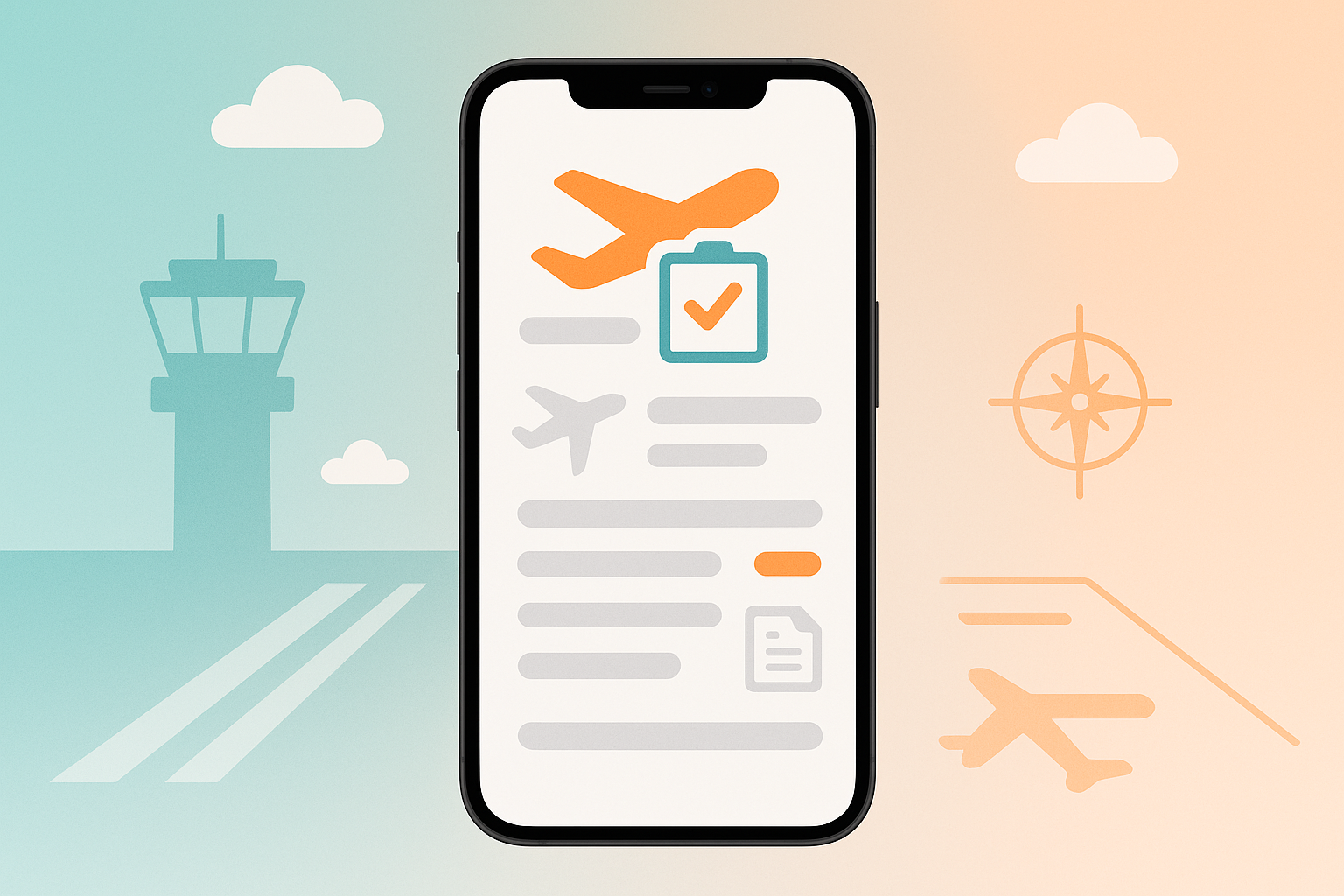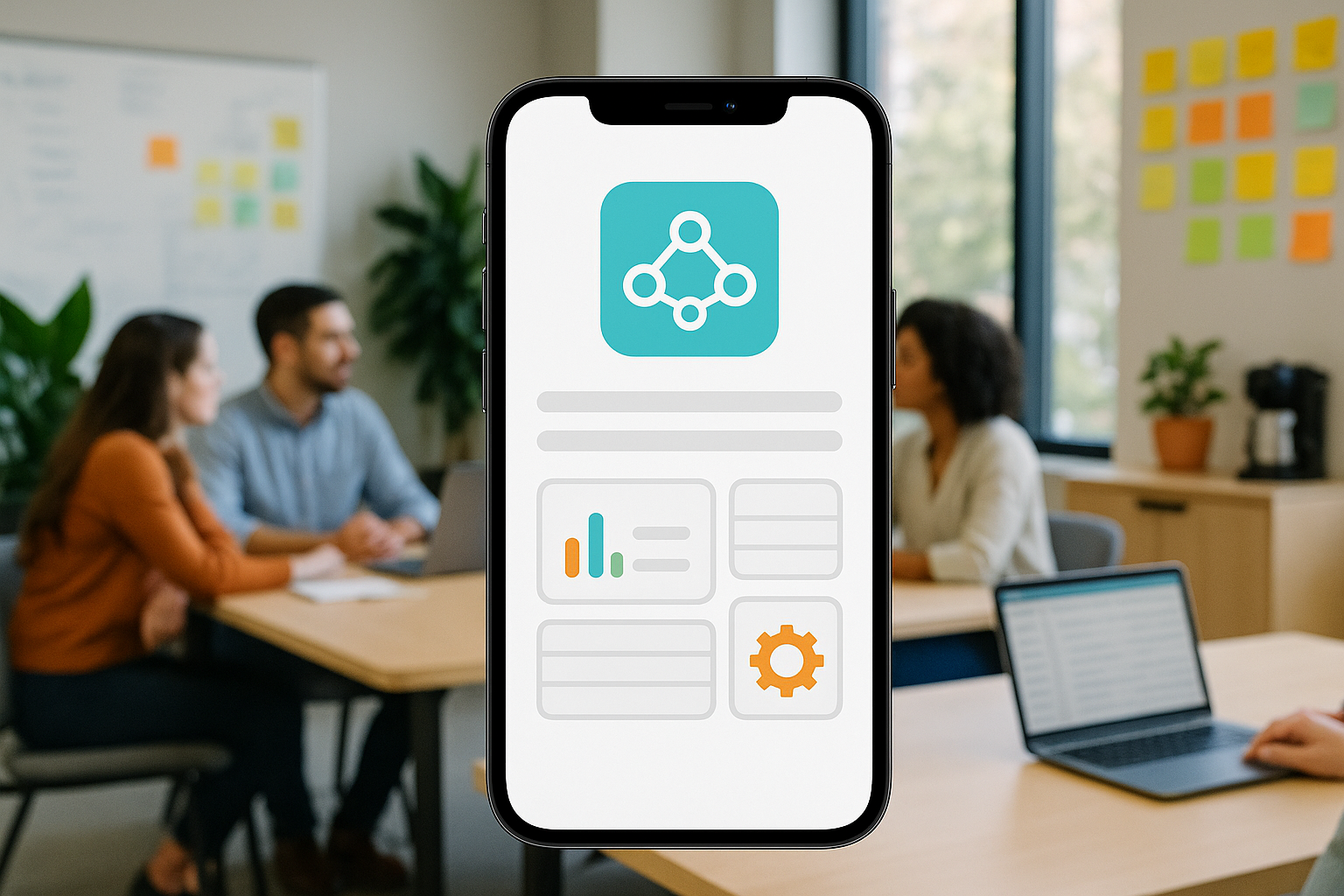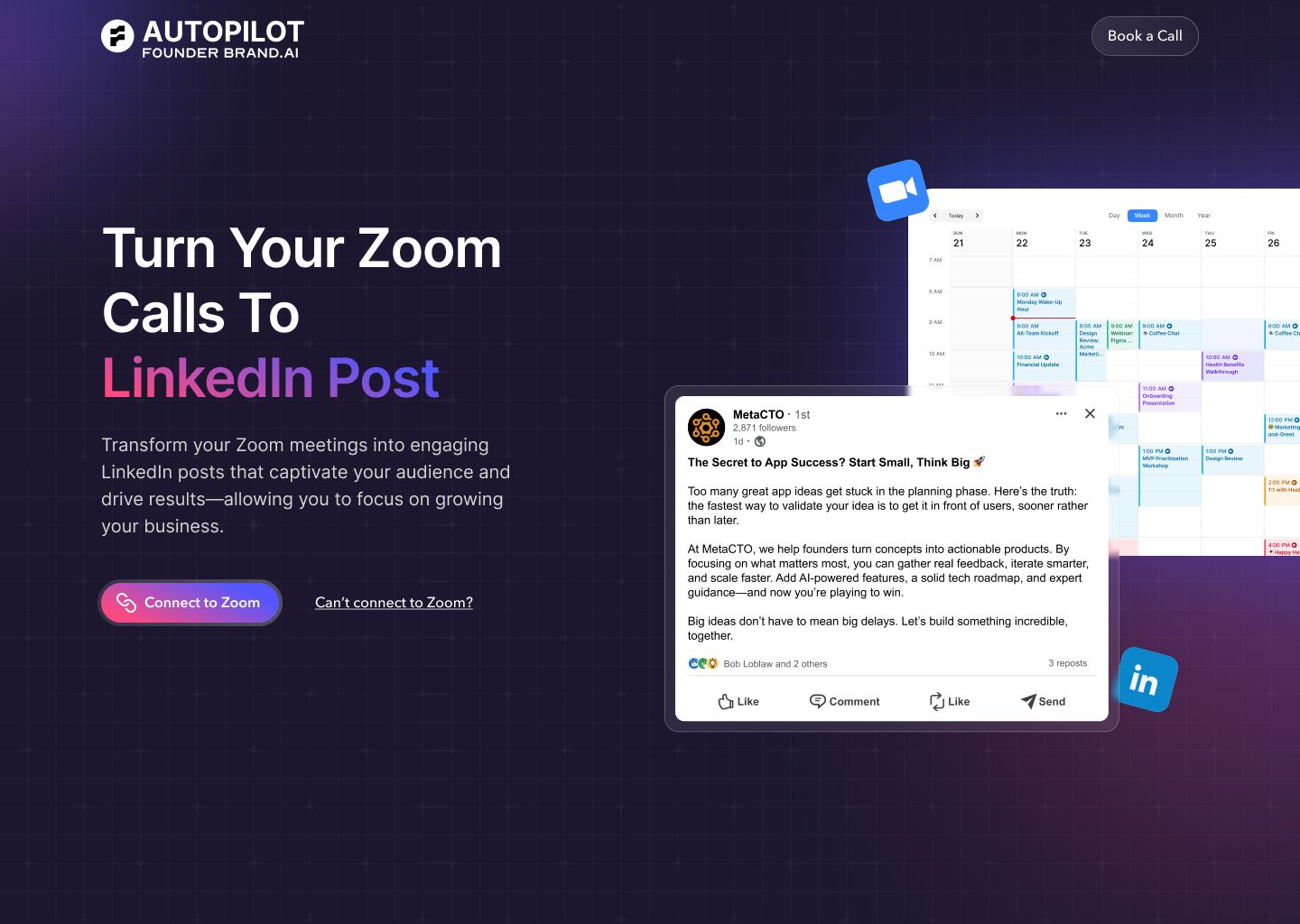Introduction
The aviation industry operates on a foundation of precision, safety, and unwavering adherence to regulations. For airport operators and airlines, compliance is not merely a bureaucratic task; it is the bedrock of their license to operate, ensuring the safety of millions of passengers and crew members daily. In this high-stakes environment, managing the labyrinth of local, national, and international regulations is a monumental challenge. The development of a dedicated airport compliance app has emerged as a critical solution, but creating one is fraught with complexity, significant costs, and technical hurdles that can overwhelm even the most capable in-house IT teams.
This article serves as a comprehensive guide to the world of airport compliance app development. We will explore what these applications are, delve into the significant challenges that make their in-house development so difficult, and categorize the different types of compliance software available. Furthermore, we will break down the cost factors involved and introduce the leading companies that specialize in this demanding field.
As a top US-based, AI-powered app development firm with over two decades of experience, we at MetaCTO understand these challenges intimately. We have a proven track record of launching over 120 successful projects, many of which involve navigating complex regulatory and data-intensive environments. We specialize in transforming intricate requirements into seamless, intuitive, and effective mobile applications. This guide will leverage our expertise to provide clear insights and actionable advice, positioning MetaCTO as your ideal partner to build, grow, and monetize a world-class airport compliance application.
What is an Airport Compliance App?
An airport compliance app is a specialized software solution designed to help airport authorities, airlines, and ground operations staff systematically manage, track, and document their adherence to the vast array of regulations governing the aviation industry. Far more than a simple digital checklist, these applications are sophisticated tools that integrate complex data, streamline critical workflows, and provide a verifiable audit trail for regulatory bodies. The primary goal is to move compliance from a reactive, paper-based process to a proactive, digital, and data-driven system that enhances safety, security, and operational efficiency.
The functionality of these apps is diverse and tailored to specific regulatory needs. Key features are designed to address the most pressing compliance challenges faced by airports:
- Obstruction and Airspace Analysis: Airports must ensure that the airspace around them is free from obstacles that could endanger aircraft. Advanced compliance solutions, such as the ArcGIS for Aviation: Airports solution, can perform all required obstruction analyses to meet every relevant aviation regulation. This involves digitally mapping terrain, buildings, and temporary structures like cranes to ensure they do not infringe upon protected flight paths.
- Airport Layout and Planning: Civil aviation authorities require airports to maintain and submit accurate Airport Layout Plans (ALPs). Modern compliance apps can generate validated electronic airport layout plans (eALPs). These plans are not static drawings; they are dynamic, data-rich documents designed to help airports prepare compliance data for seamless submission to their governing bodies.
- Field Inspections and Operations: A significant portion of airport compliance involves regular inspections of runways, taxiways, lighting, and safety equipment. Field mobility apps are crucial for this task, allowing operations staff to conduct inspections directly on the tarmac in accordance with strict regulations like 14 CFR Part 139 in the United States. These apps guide staff through inspection protocols, allow for photo and note capture, and instantly log data, creating an immediate and unimpeachable record of compliance activities.
- Wildlife Hazard Management: Collisions between aircraft and wildlife, particularly birds, pose a serious threat. Innovative compliance apps are being deployed to mitigate this risk. For example, an application used at Amsterdam’s Schiphol Airport integrates and displays radar data showing bird movements in real-time. This allows air traffic controllers and wildlife management teams to take preventative action, directly enhancing flight safety.
In essence, an airport compliance app centralizes disparate regulatory requirements into a single, manageable platform. It transforms abstract rules into actionable tasks, provides tools for execution and verification, and ultimately creates a safer and more efficient airport environment.
Reasons it is Difficult to Develop an Airport Compliance App In-House
While the benefits are clear, the path to developing an effective airport compliance app is filled with significant obstacles. Attempting to build such a specialized application with an in-house team, unless that team possesses deep and specific aviation software experience, can quickly become a resource-draining and ultimately unsuccessful endeavor. The difficulties stem from three primary areas: regulatory intricacy, data complexity, and prohibitive costs.
Overwhelming Regulatory Complexity
The single greatest challenge is the sheer volume and complexity of the rules. An airport compliance app must adhere to a dense web of legal and industry-specific requirements. These are not general software guidelines; they are strict mandates from national and international bodies like the Federal Aviation Administration (FAA), the European Union Aviation Safety Agency (EASA), and the International Civil Aviation Organization (ICAO).
- Constant Evolution: Aviation standards are not static. They are constantly updated in response to new technologies, security threats, and safety incidents. An in-house team must dedicate significant resources simply to stay abreast of these changes and continuously update the app’s logic to remain compliant.
- Jurisdictional Differences: Regulations vary significantly from country to country and even from state to state. An app intended for use at multiple airports must be architected to handle these variations, adding layers of complexity to its design and maintenance.
- Specialized Knowledge: Simply reading the regulations is not enough. Understanding their practical application requires specialized legal and operational expertise. For instance, correctly interpreting and implementing the requirements of 14 CFR Part 139 for airport certification requires a deep understanding of airport operations, from runway friction testing to emergency response planning. This expertise is rarely found within a general-purpose IT department.
This regulatory burden directly impacts the development process, adding significant complexity and raising the overall cost, as has been noted in analyses of aviation app development.
Complex Data Integration and Licensing
Airport compliance apps do not operate in a vacuum. They must ingest, process, and display data from a wide variety of specialized sources. Sourcing, licensing, and integrating this data is a major technical and financial challenge.
- Proprietary Databases: The development of a robust compliance app often requires access to proprietary, aviation-related databases. This can include databases for navigational aids, terrain and obstacle data, aeronautical charts, and security watchlists. Licenses for these databases represent a significant and often recurring hidden cost of development.
- Real-Time Data Feeds: Many compliance functions rely on real-time information. The Schiphol bird-strike prevention app, for instance, requires a live feed from radar systems. Other apps may need to integrate with air traffic control systems, weather services, or airport security networks. Building stable, secure, and reliable integrations with these mission-critical systems is a highly specialized skill.
- Data Validation and Integrity: The data used in a compliance app must be impeccably accurate. An error in an obstruction database or a faulty airport layout plan could have catastrophic consequences. The app must therefore include robust mechanisms for data validation and integrity checks, further complicating the development process.
Prohibitive and Unpredictable Costs
Building any sophisticated application is expensive, but the unique requirements of the aviation industry add several layers of non-negotiable costs that make in-house development particularly burdensome.
- Legal and Licensing Fees: Beyond database licenses, there are often fees associated with certifying that the software itself complies with aviation industry standards. These legal and licensing fees are a hidden cost that can substantially inflate a project’s budget.
- The “Complexity Tax”: As noted in cost breakdowns for apps in the airline sector, ensuring adherence to aviation standards adds inherent complexity that raises the development cost. This “tax” manifests as:
- Increased Development Hours: More time is needed for research, designing complex logic, and building features that meet exacting specifications.
- Rigorous Testing: Testing cannot be cursory. It must be exhaustive, covering every possible regulatory scenario to ensure the app is foolproof. This requires specialized quality assurance personnel and extensive test planning.
- Need for Senior Expertise: Junior developers cannot be tasked with architecting a mission-critical compliance system. The project requires senior engineers, solution architects, and project managers with experience in high-stakes, regulated environments, commanding higher salaries and rates.
This is precisely where partnering with a specialized agency like MetaCTO provides immense value. With 20 years of app development experience and a portfolio of 120+ successful projects, we possess the deep technical expertise and strategic foresight required to navigate these challenges. Our Fractional CTO service provides the high-level partnership needed to build a comprehensive technology and AI roadmap that aligns business goals with the unyielding demands of regulatory compliance, turning a potential resource pit into a strategic asset.
Different Types of Airport Compliance Apps
The term “airport compliance app” is an umbrella that covers a wide range of specialized software solutions, each designed to address a specific area of regulatory oversight. While some airports may opt for a comprehensive, integrated system, many applications are developed as standalone modules or focused tools. These can be broadly categorized into safety and operations, security, and environmental compliance.
| Category | Type of Software/App | Primary Function | Supporting Facts |
|---|---|---|---|
| Safety & Operations | Obstruction Analysis Systems | Performs analysis to ensure airspace is clear of obstacles. | Supported by ArcGIS for Aviation: Airports solution. |
| Electronic Airport Layout Plans | Generates validated digital plans for submission to authorities. | Supported by ArcGIS for Aviation: Airports solution. | |
| Field Inspection Mobility Apps | Guides and records regulated inspections of airport infrastructure. | Supports regulations like 14 CFR Part 139. | |
| Wildlife Hazard Management | Uses data like radar feeds to prevent collisions with wildlife. | Example: Schiphol’s bird movement app. | |
| Airport Safety Modules | Integrated modules for managing overall airport safety protocols. | Part of Pacific Controls’ Converged Integrated Airport Solutions. | |
| Security | Border Management Systems | Manages passenger entry/exit and immigration processes. | Offerings from ARINC (Automated Border Control, etc.) and SITA. |
| Passenger & Airport Security | Manages physical security, passenger verification, and access. | Offerings like ARINC AIM Physical Security and ARINC VeriPax. | |
| Biometric Authentication | Uses biometrics for secure passenger identification and boarding. | Standalone solutions available. | |
| Boarding Control Systems | Ensures authorized passengers board the correct flights. | Integrated systems for gate management. | |
| Cybersecurity Solutions | Protects airport IT systems and sensitive data from cyber threats. | Offerings from ARINC and SITA. | |
| Environmental | Environmental Management Systems | Tracks and manages compliance with environmental regulations. | Includes monitoring noise, emissions, and waste. |
Safety and Operations Compliance
This is arguably the most traditional and foundational area of airport compliance, focused on the physical safety of aircraft operations.
- Airspace and Ground Safety: Apps in this category, like the ArcGIS for Aviation: Airports solution, focus on the physical environment. They perform complex obstruction analyses and help generate the validated electronic airport layout plans required by civil aviation authorities.
- Field Operations: The rise of field mobility apps has revolutionized daily compliance. Operations staff can now use tablets or phones to conduct rigorous, mandated inspections of runways, taxiways, lighting, and safety markings, ensuring compliance with standards like 14 CFR Part 139.
- Integrated Safety Management: Some platforms, like Pacific Controls’ Converged Integrated Airport Solutions, offer dedicated Airport Safety modules that provide a more holistic view of safety compliance across the entire airport ecosystem.
Security Compliance
Airport security is a paramount concern, and a host of compliance apps are dedicated to securing borders, passengers, and data.
- Border Management: This is a critical function involving multiple technologies. Solutions like ARINC’s Automated Border Control, Border Management Solutions, and Electronic Borders, as well as SITA’s border control software, help governments and airport authorities manage the flow of people across borders in compliance with immigration and security laws.
- Passenger and Physical Security: This includes a range of software from passenger and airport security software to specific tools like ARINC AIM Physical Security for monitoring facilities and ARINC VeriPax for passenger verification. Biometric authentication solutions and boarding control systems further ensure that only authorized individuals have access to secure areas and aircraft.
- Cybersecurity: In the digital age, protecting data is as important as protecting physical assets. Both SITA and ARINC offer specialized airport cybersecurity software to defend against threats, a critical component of modern compliance.
Environmental Compliance
Airports are also subject to increasingly strict environmental regulations. Environmental management systems are designed to help airports monitor and report on factors like aircraft noise levels, carbon emissions, water runoff quality, and waste disposal, ensuring they comply with local and national environmental laws.
Cost Estimate for Developing an Airport Compliance App
Determining a precise cost for an airport compliance app without a detailed project scope is challenging, as the final figure depends heavily on the specific type of app, its complexity, and the number of integrations required. However, we can analyze the key factors that drive the cost, using insights from the development of other complex aviation applications. The budget must account not only for standard development work but also for the significant “compliance tax” unique to the industry.
The primary cost driver is the sheer complexity involved. The fact that ensuring an airline app adheres to legal and industry-specific requirements, such as those related to aviation standards, adds complexity to the development process and raises the overall cost cannot be overstated. This complexity translates directly into more hours for senior developers, testers, and project managers.
Beyond standard development rates, several hidden costs must be factored into any realistic budget:
- Legal and Licensing Fees: These are non-negotiable expenses. The project will incur costs for legal consultations to interpret regulations correctly. Furthermore, there will be legal and licensing fees for an airline app, which include aviation industry standards. These fees grant the right to build software that aligns with protected, proprietary standards and are a significant line item.
- Aviation-Related Database Licenses: A functional compliance app is data-dependent. Licenses for aviation-related databases add to the hidden costs. Whether it’s for aeronautical charts, obstruction data, or security watchlists, these licenses can be expensive and often require annual renewal, making them a recurring operational cost that must be planned for from the outset.
- Intensive Testing and Validation: Quality assurance for a compliance app is far more rigorous than for a standard consumer app. The testing phase must include exhaustive scenario-based testing to ensure the app behaves correctly under all possible regulatory conditions. This requires specialized QA engineers and can significantly extend the project timeline and budget.
At MetaCTO, we help our clients manage and control these costs through a strategic and transparent process. We start with product discovery and a clear roadmap, which helps to eliminate the “hidden costs” that often derail in-house projects. Our Rapid MVP Development service is particularly effective in this space. By focusing on launching a core, functional product in as little as 90 days, we enable our clients to test the most critical compliance features, gather user feedback, and demonstrate value to stakeholders before committing to a larger, more complex build-out. This iterative approach de-risks the investment and ensures that the final product is perfectly aligned with both user needs and budgetary realities.
Top Airport Compliance App Development Companies
Choosing the right development partner is the most critical decision you will make when embarking on a compliance app project. The ideal partner possesses not only elite technical skill but also a deep understanding of regulated industries and a strategic, business-first mindset.
1. MetaCTO
As a premier US-based AI-powered mobile app development agency, we at MetaCTO position ourselves at the forefront of building mission-critical applications for specialized industries. Our unique combination of deep technical expertise, strategic business acumen, and a proven, agile development process makes us the ideal partner for developing a sophisticated airport compliance app.
Our track record speaks for itself. With 20 years of app development experience, our team has successfully launched over 120 projects and has helped our clients secure over $40M in fundraising support. Our 5-star rating on Clutch reflects our commitment to client success. We are trusted by major brands and organizations, including ATP and Carlyle.
What truly sets us apart is our holistic approach. We handle every step of the process, from initial concept validation and strategy to design, build, launch, growth, and monetization. We don’t just build software; we build strategic assets designed to increase profit and valuation. Our expertise in AI Development allows us to integrate intelligent features like predictive analytics for safety risks or AI-powered document verification, future-proofing your application. Our core Custom Mobile App Development service is founded on the principle of turning complex challenges into seamless, market-ready solutions.
2. Thales Group
Thales Group is a formidable global entity and is recognized as the leading worldwide provider of Air Traffic Management (ATM). Their deep roots in the aviation and defense sectors give them a profound understanding of the regulatory landscape. Thales provides end-to-end software services and works directly with governments, airports, and airlines, making them a major player in large-scale compliance and operational systems. Their specialization in ATM gives them unparalleled expertise in solutions related to airspace management and air traffic flow.
3. SITA
With a history spanning more than 70 years, SITA has established itself as the world’s leading specialist in air transport communications and information technology. The company is deeply embedded in the industry, providing IT services to a vast ecosystem that includes airlines, airports, aircraft, and governments. SITA’s longevity and scale are evidenced by the fact that they are trusted by over 2500 clients worldwide. Their extensive portfolio includes solutions for border management and cybersecurity, making them a key provider for security-focused compliance applications.
Conclusion
The development of an airport compliance app is an essential step for any modern aviation entity seeking to enhance safety, streamline operations, and ensure unwavering adherence to a complex regulatory framework. As we have explored, these applications are sophisticated tools that address everything from airspace safety and field inspections to border security and environmental standards. However, the path to creating one is laden with challenges, including navigating dense regulations, integrating specialized data, and managing significant and often unpredictable costs. These hurdles make in-house development a risky proposition and underscore the importance of selecting a world-class development partner.
Throughout this guide, we have outlined the critical aspects of this specialized field, from defining the applications themselves to identifying the top industry players. The choice of a partner is paramount, requiring a firm that offers more than just code—it requires a strategic ally.
The journey from a compliance challenge to a functional, robust application is complex, but you do not have to navigate it alone. At MetaCTO, we combine two decades of app development experience with a forward-thinking, AI-enabled approach to build solutions that are not only compliant but also drive efficiency and innovation. Our process is designed to de-risk your investment, accelerate your time to market, and deliver an application that becomes a core strategic asset for your organization.
Talk with an Airport Compliance app development expert at MetaCTO today to discuss your project and receive a clear plan to move forward. Let’s build your app the right way, from day one.






